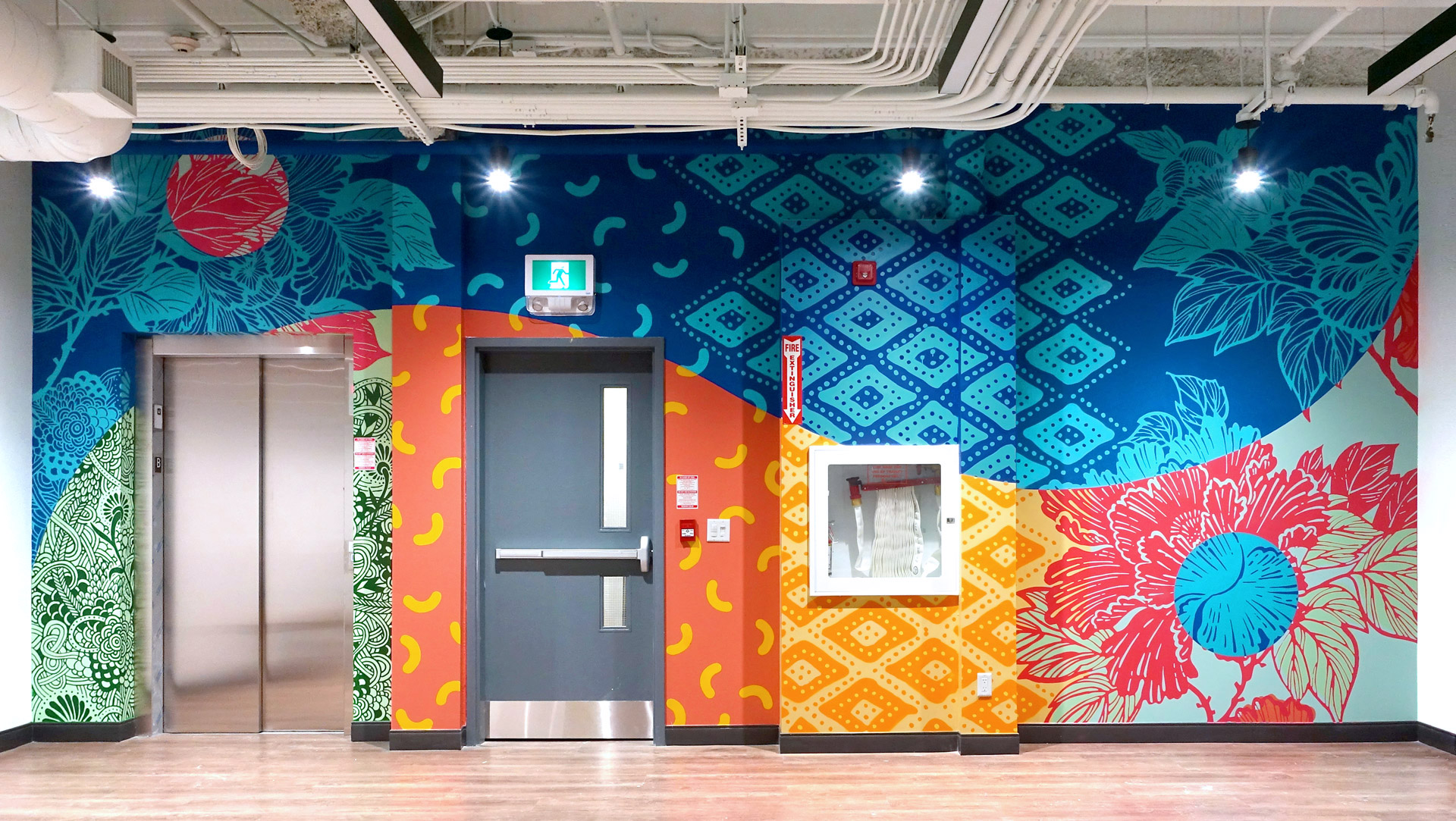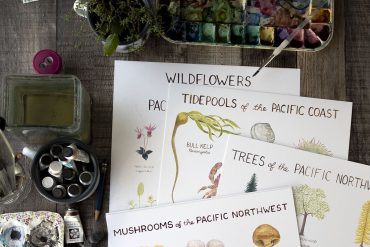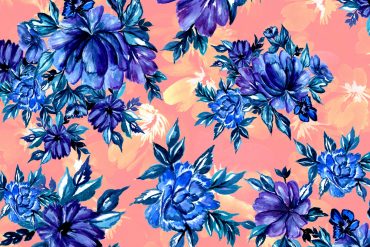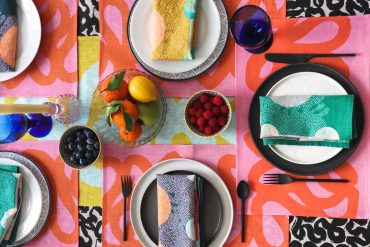Hello Kirsten is a muralist and fine artist working in Toronto, Canada. She mixes patterns and interesting color palettes to create vibrant large murals and smaller detailed sculptural works and paintings. Kirsten has participated in numerous exhibitions, residencies, art fairs, and presentations. It will be a delight to hear more about her process and creative journey. She will be presenting to the Textile Design Lab on February 8th at 3pm EST.
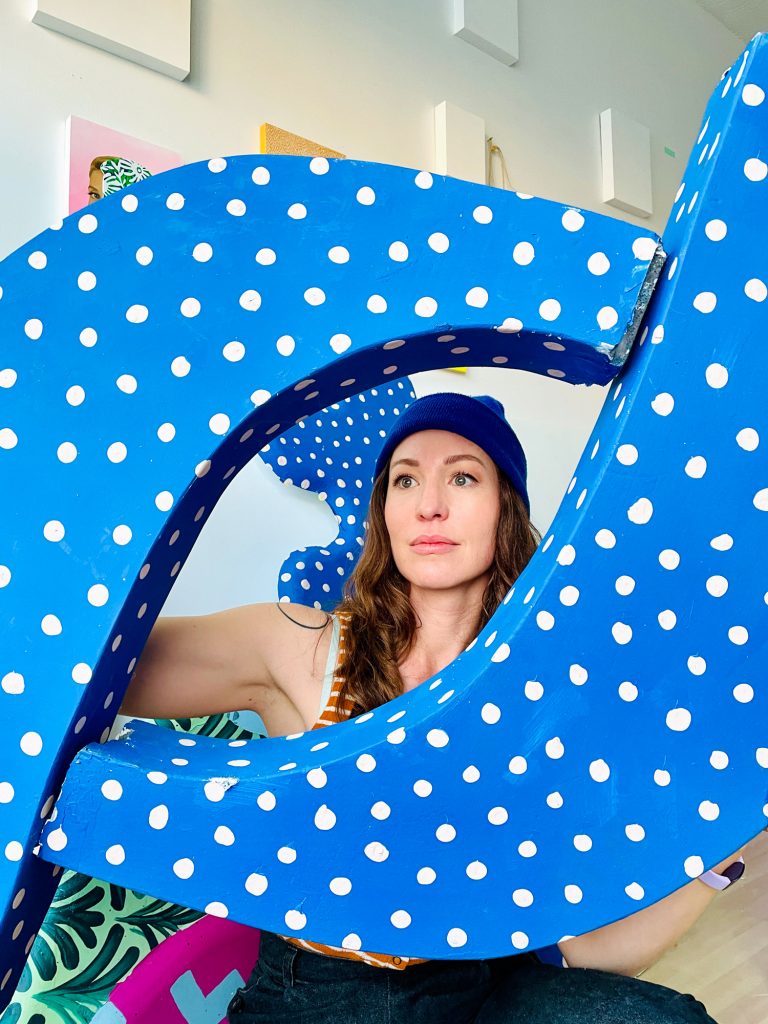
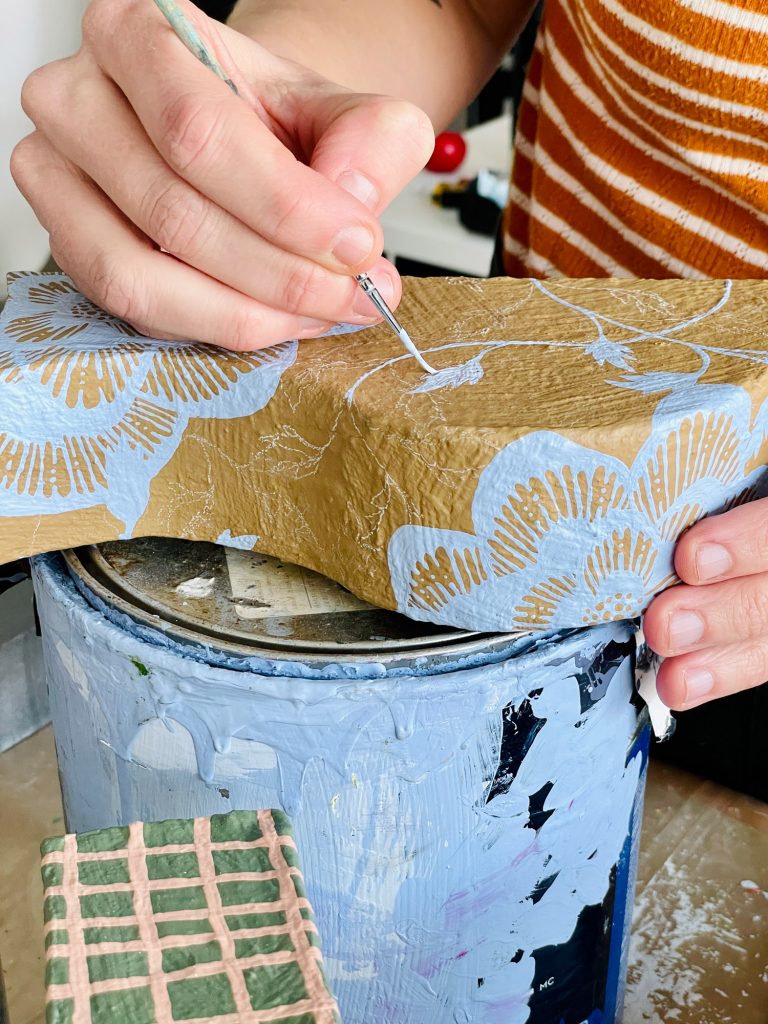
How did you get your first job painting murals? And how do you find current mural opportunities?
I was part of an art collective called En Masse (https://www.enmasse.info/) when I lived in Montreal. It was a constantly-revolving roster of artists who go together to make large black and white murals. After a few years of working with them, I decided that I wanted to try making my own colourful murals.
It’s funny, sometimes when you put something out into the world it comes together so quickly. I was at an art opening with my husband and stated for the first time that I wanted to make my own mural. A curator I knew approached me an hour later (he had no idea I had said this) and told me he had me in mind for an upcoming mural project. Within a month I had 6 murals lined up. Many of them were small and underpaid, but those initial works got me a portfolio that quickly levelled up to other projects.
It all seems too easy and serendipitous in many ways, but the reality is I had been working towards this for a long time and had created a foundation that allowed the pieces to easily fall into place. I had been making art full-time for almost a decade. I had a huge network of fellow artists and muralists I could turn to with all my questions. Those same people told me about opportunities or passed projects along to me that they couldn’t take. And I had a great portfolio of work (both studio paintings and murals with En Masse). I had been working my butt off for a really long time, and was professional and responsive. All of that laid the groundwork for a move into murals that felt effortless and easy, when in reality years had gone in to preparing for that moment.
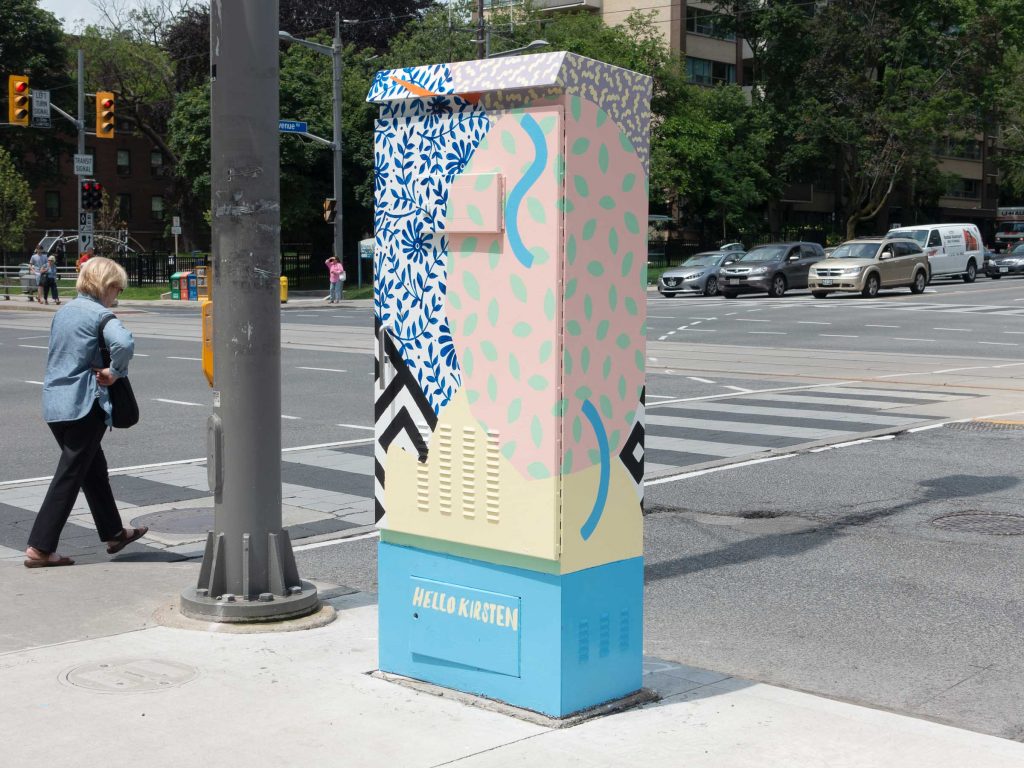
What is your process for your studio work? What materials do you use most?
For 12 years I ran an art subscription called Papirmass. This, alongside murals, left very little time for my own studio work. It’s only been since Papirmass closed in 2020 that I have been able to devote serious time for a studio practice, and I’m surprised at where that has taken me. I’ve been creating a lot of sculptures, which is never something I saw myself doing. Sculpture was the one class I almost failed in art school!
I started out with wood. I would collect off-cuts from a local wood shop and paint patterns onto them, then see how the different pieces fit together. I think that I can be quite controlled in my work, and I was trying to add an element of spontaneity into my practice by choosing shapes others had cut and discarded.
When the pandemic hit two things happened that changed the course of my practice. First, I lost access to the wood shop (Toronto had very strict lockdown restrictions and almost all common spaces closed for 2020 and much of 2021). Second, I was invited to create a site-specific installation in an abandoned building (Elegy for Lake Ontario).
I worked with foam for the first time for that installation and loved it. It was pliable and nimble in a way that wood isn’t. At the end of the exhibition I salvaged the foam and have been cutting it and sculpting with it in my studio. It’s far less messy than working with wood, and a lot lighter (shipping an exhibition of wooden sculptures would cost a fortune). I am still working with the element of chance, making shapes and only figuring out later how they fit together. I’m realizing that that’s so much of what life is: taking what you’re offered and seeing how it fits with you and your life.
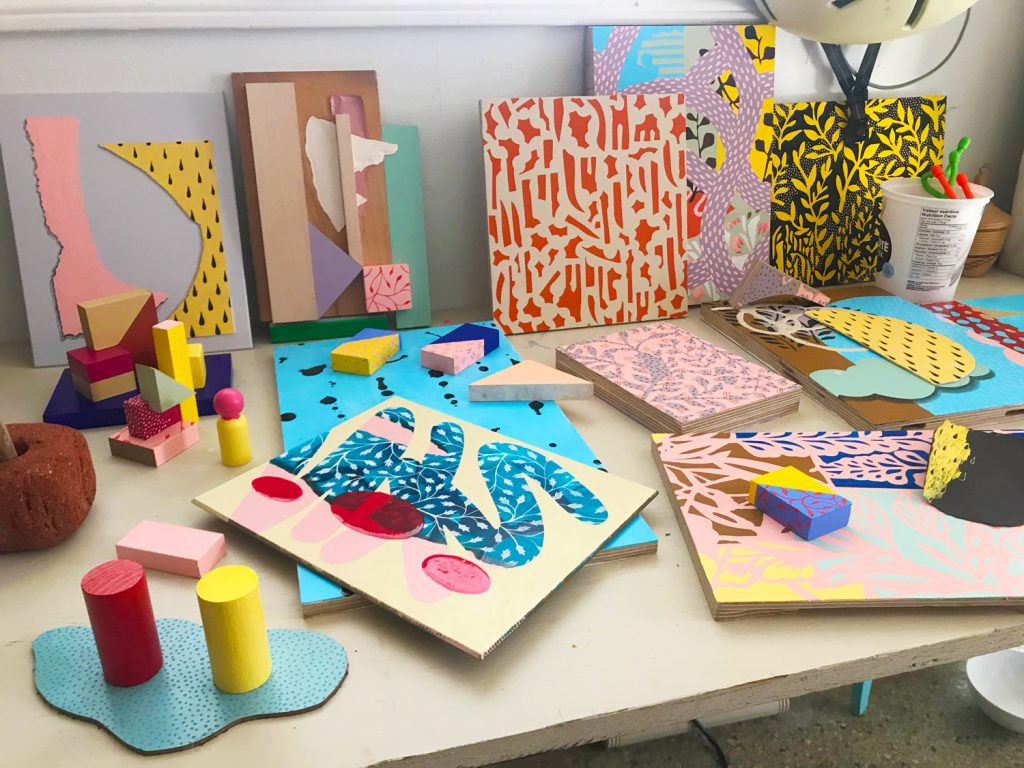
Do you have any tips for applying to grants and residences?
I do, and that is to apply to a LOT of them. Don’t be dispirited by rejection – go in with the expectation that you will be rejected for 80-90% of what you apply for. It’s hard, but that’s the reality. A rejection is not a reflection of your work. It’s a reflection of who was on the jury, their own personal preferences, the suitability of you to the opportunity, and who else applied. You never know who you’re up against.
My other recommendation is to make sure that you have excellent photos of your work. Shop around – professional photographers vary quite a bit in price. Take a course online if you want to do it yourself (but know that there’s no replacement for a good camera lens).
Finally, make sure the writing you have about your work is clear and high-quality. It doesn’t hurt to have someone else read it over to make sure they understand what you’re saying. Think about what world you want to get into. Public art juries are very different than high-brow gallery juries. If you aren’t tweaking your language to your audience, you won’t look like a good fit.
Tell us about your pattern archives and your appreciation of the history of patterns. What are your favorite sources for researching projects?
Pattern is something I’ve always been drawn to, but in the early years of my practice I wasn’t as cognizant of where patterns come from and what they represent. Now I’m much more careful about what I lift and borrow. It’s important to recognize that, while cross-cultural interactions have shaped human history for millennia, some things are sacred and have deeper meanings that you might initially understand.
I’ve collected a massive number of books on pattern. This image shows just a few of them. (hk-pattern-books.jpg). I’ve also amassed a digital library of about 100,000 patterns, each linked to one of 16 geographical regions in the world. When working on a long-term public art piece, I’m very careful to look into the history of each pattern and determine where it is from, what it is used for, and what it represents. Public artwork will be seen by a lot of people, and it’s important to be respectful in its use. You wouldn’t want to put a pattern used only in funeral shrouds, or a motif that symbolizes a very specific right-of-passage for a specific culture, into an artwork that isn’t trying to talk about those things.
It’s also important to make sure that patterns you use are royalty-free (meaning that you aren’t infringing on anyone’s copyright). Some of my favorite sources for this are the online digitized collections of museums such as the Met, the V&A, and any number of smaller history museums. You can find quite a lot of interesting things there that you won’t see on Pinterest or elsewhere online.

What are the pros and cons of collaborating with other artists on murals?
One of the hard things about being an artist can be the solitude. I love being alone and working alone, but I’m also just enough of an extrovert that I do need the energy from other people to keep me going. I’ve also found with murals that the ideas other people bring to the table can be incredibly helpful for creating a stronger end result. I often resent initial feedback just a little bit, but I’ve learned to expect this emotion and simply let it be, because the end result is always better. Other people see things you don’t and can help make your work stronger.
Collaborating with other artists builds a sense of camaraderie and community that is vital. One of the things I truly love about the street art world is how open and friendly everyone is. I’ve found the fine art world to be stuffy and closed-off. But when I’m around muralists and graffiti writers, everyone is so nice! It’s odd because it’s just as competitive, maybe even more so, but people in this world seems to see each other as allies instead of competitors. I really value that.
What has been unique about your creative journey?
My creative journey has seen me zigzag through several mediums and several worlds. Getting to where I am now certainly wasn’t a straight shot.
I went to art school for painting, but almost immediately launched Papirmass and found myself in the publishing world. My love for print and street art led to wheat pasting. Then I started selling the leftover prints I hadn’t pasted up at craft fairs, and they were a huge hit. That’s really how I supported myself in the early years of being a full-time artist.
Eventually I moved from Montreal to Toronto and that’s when I started getting mural work. Toronto has a lot of public funding for this type of art, thankfully. All along I had a studio painting practice, but it was underdeveloped. Then, as I mentioned, I moved into installations, and that led to sculpture, which is leading me back to painting in a roundabout way.
I’ve also periodically gotten work from design, licensing, artist talks, and grants. I think it’s really important to have multiple different income streams, because there’s always an ebb and flow to where work is coming from. Next year I would love to move more into gallery exhibitions, but we’ll see if those are the doors that open for me. I’ve never gone exactly where I thought I would in my career or creative journey, so who knows what the future holds?
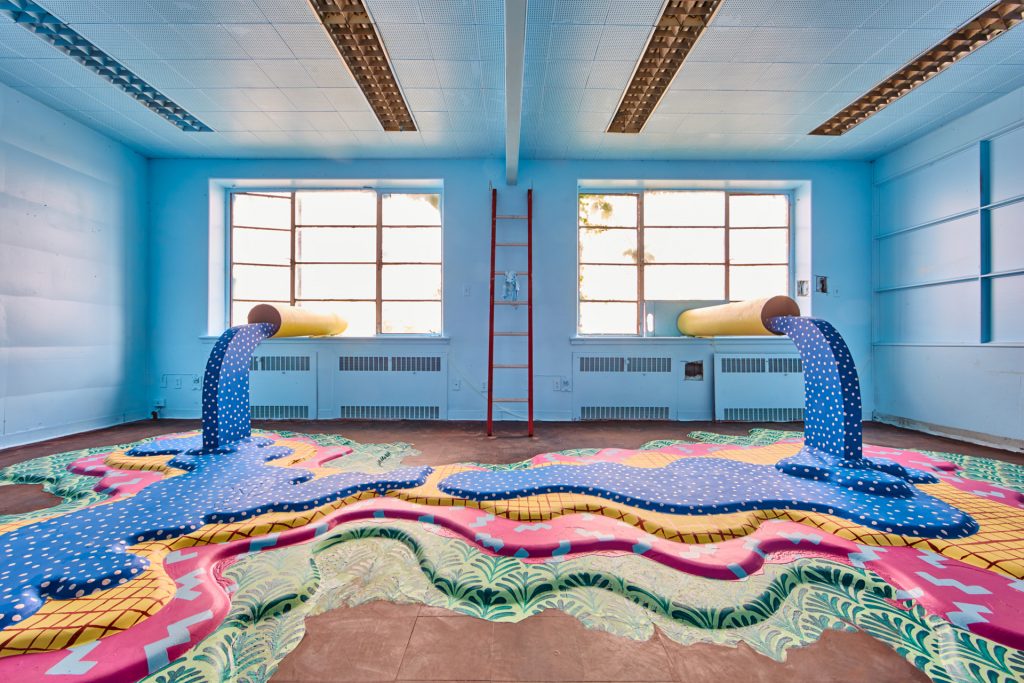
Have you thought about creating art for products and surfaces?
Yes! Licensing my work is something I wanted to do so badly when I was younger. I made quite a few original repeating patterns, and even worked briefly for a clothing company, designing the fabric for the insides of their coats. I also made and sold my own stationary products for years at craft fairs and in stores.
Licensing my original patterns is definitely something I would consider doing again in the future, but I’ve also realized that it’s not where my joy comes from. I see people like Elizabeth Olwen who are really knocking it out of the park in that arena, and I can appreciate that it’s a full-time job to really succeed in that world. You have to give it your all. I spent years being pulled in so many directions – publishing, collaborative painting, murals, studio work, some freelance design – and it was exhausting. What I’m trying to do now is hone my focus on public art and murals, with a bit of studio on the side. There’s no room for licensing as a serious pursuit at the moment, and that’s okay.
Are there any exciting upcoming projects you can tell us about or murals to look out for?
My first permanent public artwork will be unveiled soon! I created art for the glass of 4 shelters at a new LRT station in downtown Edmonton. It’s very exciting because I grew up there, and spent way too many hours as a delinquent teen on that corner. I know the area really well, and it’s exciting to put something there that will last for 30+ years. It’s a project that spanned over 3 years, so it will be really nice to see it wrap up.
I’m supposed to paint my first multi-story mural this year, but it’s already been delayed for two years due to COVID, so we’ll see. I’m trying really hard to not be too attached to outcomes and plans! There have been a lot of cancellations and postponements over the pandemic, so I’m trying to take things as they come and not stress too much.
I have a few other projects in the early stages of planning, but no contracts are signed yet so I can’t speak to them yet! But follow me on Instagram @hello.kirsten for updates. I’ll have more to announce soon 🙂
Here is a link to her website.
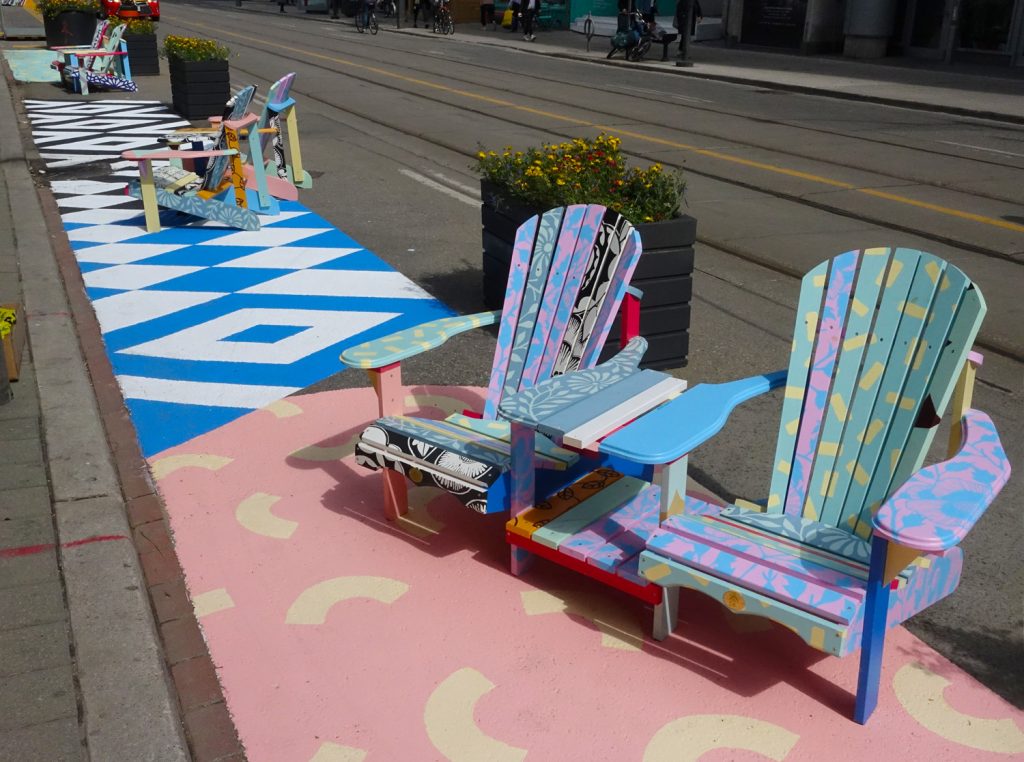
Hello Kirsten will be presenting live on February 8th at 3pm Eastern to the Textile Design Lab she would love to answer all your questions about creating murals, using historical patterns, and finding success as an artist. We will see you there!

